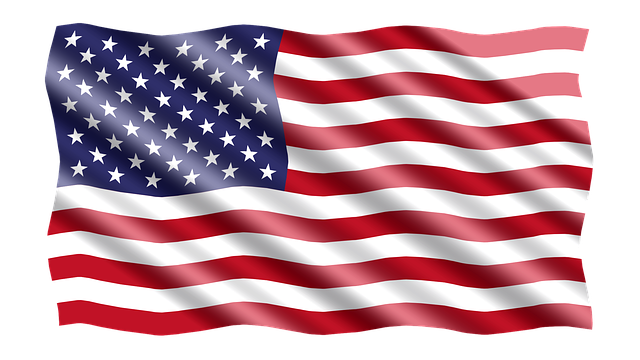The Tea Stained American Flag is a significant historical artifact that played a key role in the Boston Tea Party of 1773, symbolizing the American colonists' resistance to British taxation without representation. This flag, which bears distinctive tea stains, represents more than just a piece of the past; it is a powerful emblem of America's struggle for independence and self-determination during its colonial and revolutionary periods. Its presence at the Boston Tea Party visually declared the colonists' rebellion against British authority and their desire for freedom, which was central to the birth of the United States. This flag, with its authentic colonial design, captures the defiant spirit and resolute determination that characterized the era. It stands as a testament to the American spirit and the pivotal moment of the Boston Tea Party, which became a symbol of resistance and the fight for autonomy that culminated in the establishment of the United States. Additionally, the flag's educational significance is highlighted by its ability to engage students in learning about liberty, taxation, and representation, and it serves as an authentic reproduction that enhances immersive experiences of America's foundational period, making it an invaluable tool for historical understanding and appreciation. For event planners and educators looking to authentically recreate the atmosphere of 18th-century America, this flag is essential for reenactments and fostering a deeper connection with colonial history.
Embark on an enriching journey through America’s past with our exploration of the Tea Stained American Flag, a symbol steeped in the spirit of colonial rebellion and revolutionary fervor. This article delves into the story behind this unique banner, setting the stage for understanding its significance during the Boston Tea Party and its profound role in shaping the quest for independence. We’ll guide you through crafting your own Tea Stained Flag as an immersive educational experience and offer insights on how to bring history alive with a authentic reenactment. Join us as we unfold the layers of this historical artifact, each sip of tea leaving its mark on the canvas of our nation’s birth.
- Unraveling the Story Behind the Tea Stained American Flag
- The Historical Context of the Boston Tea Party and Its Impact on American Independence
- Crafting the Colonial Spirit: Recreating the Tea Stained Flag as an Educational Tool
- Hosting a Revolutionary Event with a Tea Stained American Flag: A Guide for Historical Reenactments
Unraveling the Story Behind the Tea Stained American Flag

The Tea Stained American Flag is a fascinating artifact that holds a unique place in American history, particularly in the context of colonial and revolutionary events. This flag, which gained prominence following its use during the Boston Tea Party in 1773, is not merely a relic but a symbol of rebellion and freedom that sparked a nation’s birth cry. The story behind this particular flag is one of defiance, as colonists, in a bold act of protest against British taxation without representation, dumped tea into the harbor while this flag waved in the air. Its distinctive markings, where stains from the tea leaves left an indelible print on its fabric, serve as a testament to the fervor and determination of those who sought independence. This flag, which is believed to have been created using patterns common during the colonial era, became a powerful emblem of resistance, capturing the essence of American spirit and the struggle for autonomy that would eventually lead to the formation of the United States of America. It stands as a unique piece of history, reflecting a pivotal moment in time when the act of throwing tea into the harbor was more than just an act of defiance—it was a declaration of a new era and a nation’s commitment to self-determination.
The Historical Context of the Boston Tea Party and Its Impact on American Independence

In December 1773, the Boston Tea Party unfolded as a significant protest against the British East India Company’s monopolistic trade practices and the imposition of taxation without representation, encapsulating the broader discontent among the colonists. This act of colonial defiance, where participants threw chests of tea into the Boston Harbor, was rooted in the historical context of increasing tensions between Britain and its American colonies. The event was not merely a dispute over tea; it symbolized the larger struggle for self-governance and economic independence that would eventually lead to the American Revolution. The repercussions of this bold statement were immediate and far-reaching, as it galvanized both support and opposition across the colonies.
The impact of the Boston Tea Party on the path toward American independence was profound. It sparked a series of retaliatory measures from the British government, including the Intolerable Acts, which further infringed upon colonial rights and liberties. These acts in turn united the colonies in a shared cause against British overreach. The event also played a pivotal role in the creation of symbols that would become iconic in the American narrative. For instance, the tea stained American flag, which emerged from this period, became an emblem of resistance and defiance, capturing the essence of the colonial fight for autonomy and shaping the nascent identity of a nation striving for sovereignty. The Boston Tea Party thus stands as a defining moment in American history, one that indelibly marked the nation’s journey toward independence.
Crafting the Colonial Spirit: Recreating the Tea Stained Flag as an Educational Tool

Crafting the Colonial Spirit through Educational Tools like the Tea Stained American Flag is an immersive way to bring history to life for those interested in colonial and revolutionary periods. The Tea Stained American Flag, a replica of the original flag that inspired the Boston Tea Party, serves as a powerful symbol of the defiance against British rule. It was this act, in 1773, where colonial patriots, disguised as Mohawk warriors, dumped over 90,000 pounds of tea into the harbor of Boston to protest the Tea Act of 1773, which they saw as a violation of their rights. The reenactment and creation of this flag in educational settings can spark engaging discussions about the principles of liberty, taxation, and representation that were central to the American colonial struggle.
Using the Tea Stained American Flag as an educational tool allows students to connect with history on a visceral level. It encourages them to explore the themes of rebellion, patriotism, and the birth of national identity. The hands-on experience of creating this historic flag helps learners understand the pivotal moments that shaped America’s future. This tangible link to the past not only educates but also inspires a deeper appreciation for the sacrifices made by those who fought for independence and the freedoms enjoyed today. The Tea Stained American Flag, therefore, is more than a mere artifact; it is a catalyst for learning, a symbol of resistance, and an embodiment of the spirit of the American Revolution.
Hosting a Revolutionary Event with a Tea Stained American Flag: A Guide for Historical Reenactments

When planning a colonial or revolutionary event, authenticity is key to immersing participants and audiences in the historical context. A centerpiece that evokes the spirit of the era is the Tea Stained American Flag, an emblem rich with symbolism and significance. This guide will help event planners recreate the atmosphere of 18th-century America, where such flags flew high, signifying the burgeoning sense of national identity amidst the struggle for independence.
The process of creating a Tea Stained American Flag is both an educational endeavor and a creative one. It involves using tea to stain fabric, replicating the aged appearance that these flags would have had during the time of the Boston Tea Party and beyond. The choice of tea, the strength of the brew, and the technique used to apply it can significantly influence the final outcome, yielding a variety of shades that mimic the wear and tear of a flag that has seen history unfold. This attention to detail not only ensures historical accuracy but also provides a tangible connection to the past for attendees, as they witness and interact with artifacts true to the period.
Incorporating a Tea Stained American Flag into your event sets the stage for an immersive experience that resonates with the themes of colonial America and the revolutionary spirit. It serves as a backdrop for reenactments, a symbol around which to rally participants, and a point of discussion that enriches the collective understanding of this pivotal era in American history. Whether used as a banner for parades, a centerpiece for ceremonies, or a conversation starter among attendees, the Tea Stained American Flag is an indispensable element for any historical reenactment seeking to capture the essence of America’s formative years.
